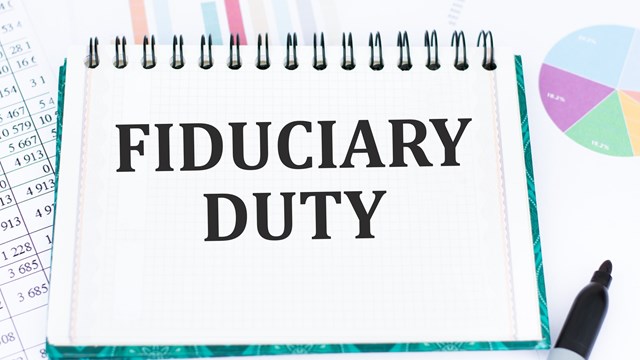
Whether it's a co-op, a condominium, or other multi-family dwelling, a well-run board usually makes all the difference between a pleasant stress-free home and a building in disarray. Boards serve to preserve the common elements, maintain architectural integrity, and otherwise promote the community. Additionally, an effective board should provide continuity and order while protecting property values and often making available recreational facilities for the residents.
When you consider the fact that a building is really a not-for-profit corporation, normally staffed by unpaid volunteers, you may ask yourself, “What am I getting out of this?” Still many residents accept a tour of duty on the board in an effort to serve and protect their fellow neighbors, and to enhance the property they all call home. Their reasons for accepting are a varied as the individuals who sign on, and effectively working together may also be a challenge for this diverse group of volunteers.
Who’s Who on The Board
The four main board positions, the president, vice president, secretary, and treasurer, generally attract residents with different skill sets, backgrounds, and expectations. Ideally, the common goal is to manage the issues and maintain harmony, but each board member may favor a different approach. If communications break down, a board may become ineffective and dysfunctional.
Serving on a dysfunctional board is difficult and frustrating for board members, and the discord often carries over to the community as a whole. When decisions aren’t made prudently, expenses may increase while value is eroded; there are no winners when a board cannot or will not do the job of fairly governing the community.
A Manager’s Role
An experienced property manager may be able to successfully provide the guidance and leadership necessary to keep an association board on track since there are early warning signs for when a board is ineffective or at risk of becoming dysfunctional.
Greg Carlson, RAM, NYARM, executive director of the Federation of New York Housing Cooperatives and Condominiums (FNYHC), and the founder and president of Carlson Realty in Forest Hills, says arguing for argument's sake is one of the early warning signs for boards at risk for becoming dysfunctional. He also cites “telling board room stories to shareholders” as problematic. When board members don't take their fiduciary duty seriously, gossiping and doling out insider details can big liability issues, and breed a rumor mill of uncertainty among residents, who will start to feel more and more out of the loop.
Alan Pearlstein is a general manager for FirstService Residential in the national firm's New York City office. He notes a slippery slope of warning signs for when board turn sour. “Early warning signs can range from the bothersome, such as difficulty in scheduling board meetings, to the more significant such as unwillingness by the board to address critical, time-sensitive building issues after repeated attempts from management.”
“One telltale sign that a board or association could be at risk of becoming dysfunctional is a lack of direction, such as the inability to prioritize projects and objectives while getting caught up in the nuts and bolts, and not being able to see the big picture,” states Pearlstein. Carlson notes this type of impasse results in nothing getting accomplished.
Jeffrey M. Heidings, president of Siren Management Corporation in New York City, concurs with Carlson and Pearlstein in that having trouble reaching a quick consensus and spending a lot of time on debates are clear red flags that boards are heading down the path of doing more harm than good.
An inexperienced or inattentive manager may miss valuable clues that a board is not functioning at peak performance, and inexperienced board members may not pick up on a loss of harmony or a slow growing conflict.
One clue Heidings relies on is listening to board members banter. He goes on to mention that not listening to the board and failure to follow up are two behaviors that are sure to invite dysfunction. In his opinion a high percentage of board members are generally on the board due to self-interest. He is quick to note this isn’t necessarily a bad thing. “Self interest can be noble in instances like trying to improve property value or amenities,” he explains. In Heidings’ experience board members usually bring specific talents to the table and they want to use those talents to lead or influence the community outcomes.
Pearlstein echoes Heidings observation and states, “New board members may have certain skills or expertise from their profession that they want to apply to the management of the building. This may not always be effective and could actually delay or hinder critical decisions that need to be made in running the building. “One mistake a new board member can make is wanting to shake up the status quo and make changes without having a thorough understanding of how those changes may negatively effect how a building is being run.”
An example Pearlstein offers is a new board member demanding to reduce the number of staff without fully grasping the complexity of executing those plans in a union building. For those who do understand, being able to communicate the problem effectively is key to keeping the board on track and in harmony. Another example Pearlstein recalls was a board member who had retired from the financial service industry and wanted to completely alter the financial reporting format to reflect how he ran his business in the private sector. The result was much more confusing for the board, and there was no reason to change in the first place.
In Pearlstein’s opinion the biggest mistake an inexperienced building manager can make is in not properly preparing the board to actually make decisions. “At FirstService Residential we make it a priority to stay on point and communicate effectively with a board on issues they must address. We suggest a manager use three general parameters when preparing the board to make a decision,” says Pearlstein.
The first is to present the issue in simple terms, and not to get too inside baseball with management terms. Understanding breeds transparency, so fellow board members and residents can feel in the loop. Second, boards should explain why the issue must be addressed, including the time frame and urgency level. Finally, board leadership should offer recommendations for the next step of action. If your building uses a property manager, it's likely he or she will guide boards through many of those steps, and board members must listen carefully and keep the best interests of the entire building in mind.
Getting Back On Track
If a board is proactive and responsible, there's no guarantee it'll be that way five years down the line. It may get out of sync, or a management company may acquire a board that has ceased to function effectively. In those instances the experts all have ways to turn things around.
Carlson uses a divide and conquer approach. “You have to take it out of the room, and speak to each board member on a one-on-one basis, starting with the board president since he/she runs and controls the meetings,” he says. Pearlstein favors identifying the issues and helping resolve the conflicts that are dividing the board. “Whether stemming from competing objectives, outsized egos, or economics, it is the manager’s duty to steer the board back to its primary purpose. Their fiduciary responsibility is running the building in a professional, effective manner.” Heidings strives to find the central points a board can rally around, while reminding board members to focus on the best interest of the community. Pearlstein agrees, “Managers should encourage all members to express their points of view, and not to view conflict resolution as a win-lose situation, but rather an optimum solution for the property.”
Heidings says a large part of property management is learning how to manage people, and it is a skill best honed through experience, with a hands-on approach. Pearlstein relies on in-house general counsel, and regularly scheduled team meetings, along with presentations by industry leaders and online courses. Carlson recommends organizations such as the Federation of New York Housing Cooperatives and Condominiums, and the Council of New York Cooperatives and Condominiums for information and guidance. The Council held an annual conference on November 15, and feature over 75 seminars dealing with the issues regularly faced by property managers.
Keeping the “Fun” in Functional
Pearlstein vividly remembers one monthly board meeting when a majority of the directors decided to resign over an issue. He paused the meeting, quickly outlined some ground rules that included only focusing on the issue at hand, concentrating only on a resolution, and avoid fixing blame on any individuals. He also set a 20-minute time limit. “That approach turned out to be successful,” he says. Now when someone brings up the time everyone wanted to quit the board, we all enjoy a laugh.”
Refocusing is a tool Heidings also finds effective, particularly when board members may have different agendas, and major projects are up for discussion. “Refocus on the building's priorities and stay on course; prioritize, but respect each board members views, and make everyone feel important,” he says. Some days that approach may be easier said than done, but the experts pretty much agree it is a good formula for keeping a board on track.
Anne Childers is a freelance writer and a frequent contributor to The Cooperator.









2 Comments
Leave a Comment